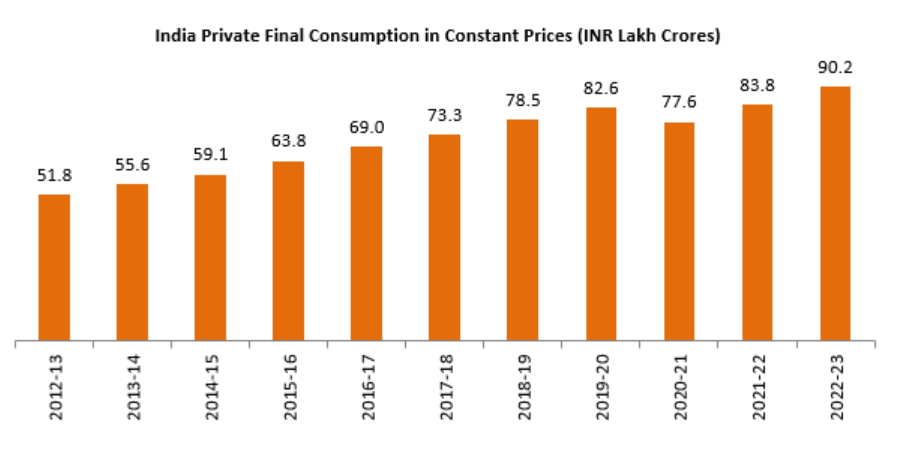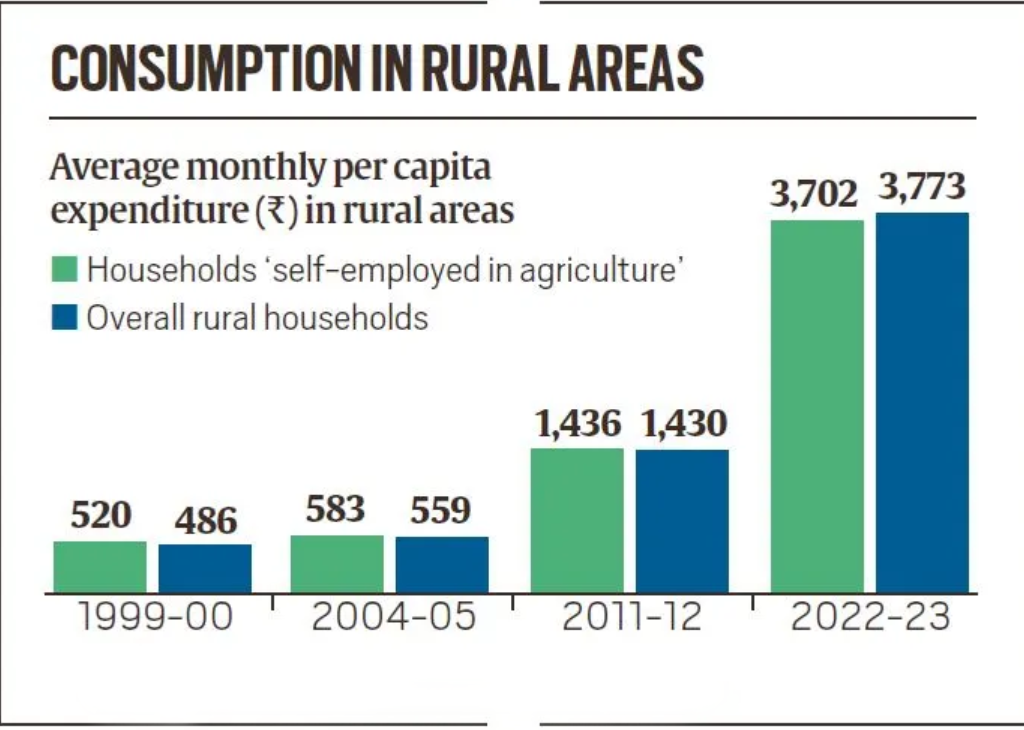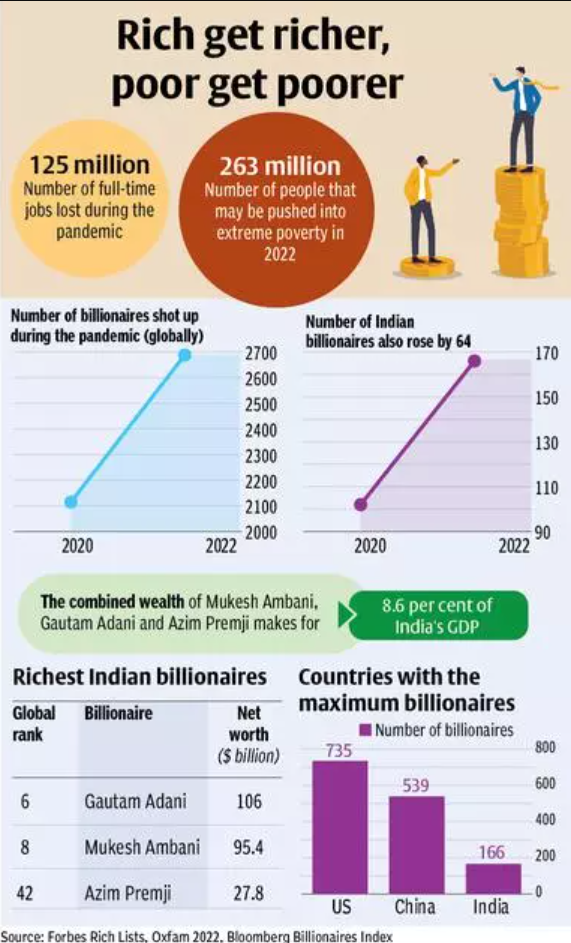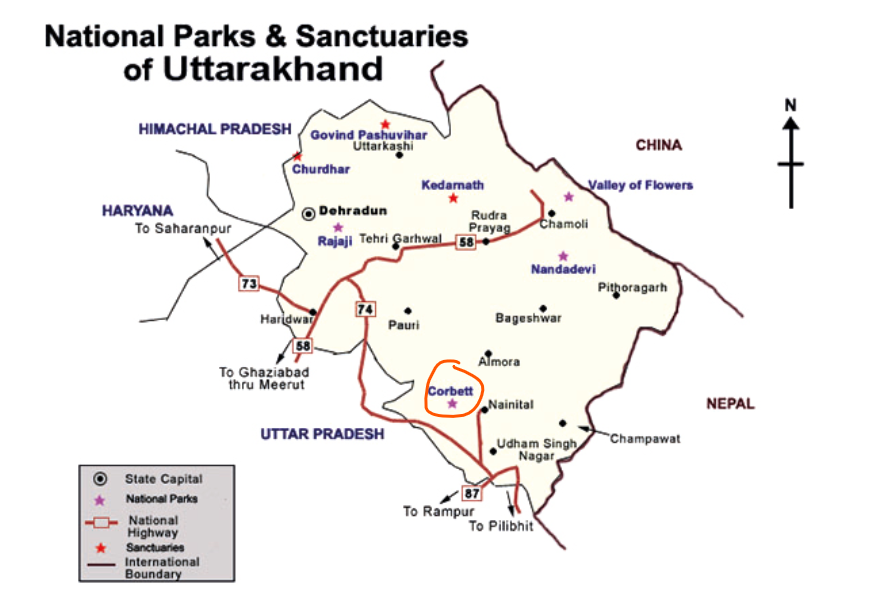CONTENTS
- Income Inequalities Hamper Sustainable Growth
- Decoding the Judgment on Jim Corbett
Income Inequalities Hamper Sustainable Growth
Context:
In the current fiscal year, the Indian economy is anticipated to achieve a 7.6 percent growth in real GDP, building upon the impressive growth rates of 9.1 percent in 2021-22 and 7.2 percent in 2022-23. This trend, coupled with the Prime Minister’s commitment to robust economic reforms during his third term, has generated optimism among analysts for sustaining growth above 7 percent. However, there’s a significant caveat.
Relevance:
GS3- Indian Economy- Growth
Mains Question:
While the nation’s GDP is poised to surge by 7.6 per cent in the current financial year, concerns loom large over the sluggish pace of private consumption. Analyse. (10 Marks, 150 Words).
Growth in Private Consumption:
- Private consumption, which contributes a substantial 55 percent to India’s economy, has become a significant hindrance.
- For instance, it’s projected to grow merely by 3 percent in FY 2023-24, even lower than the initial estimate of 4.4 percent. This marks the slowest growth in private consumption since FY 2002-03, when it was at 2.9 percent.
- Sustaining an overall GDP growth of 7-8 percent in the coming years seems implausible if the primary component, private consumption, is expanding at less than half that rate.


What constitutes private consumption?
- In addition to fundamental necessities such as food, housing, clothing, education, and healthcare, private consumption encompasses expenditure on various discretionary items.
- These may include consumer durables like air conditioners, refrigerators, washing machines, televisions, automobiles, mobile phones, and the like.
- The demand for such goods is contingent upon the purchasing power of the populace, highlighting the importance of ensuring sufficient incomes for all working-age individuals (between 18 and 60 years old).
- This underscores another crucial aspect: the distribution of income and wealth.
Where does India stand in this regard?
- According to a report titled ‘Time to Care’ by Oxfam, released before the World Economic Forum’s Annual Meeting in January 2020, “India’s wealthiest one percent possess more than four times the wealth held by 953 million individuals constituting the bottom 70 percent of the population.”
- Additionally, the report revealed that India had a total of 63 billionaires, with their combined wealth surpassing that of India’s Union Budget for the fiscal year 2018-19.
- Another Oxfam report, “Inequality Kills,” issued prior to the WEF meeting in early 2022, indicated that the number of Indian billionaires rose to 102 by March 2020 and further increased to 142 by November 2021.
- During this period, their collective wealth surged from Rs 2.3 trillion to Rs 5.3 trillion. Concurrently, the income of 84 percent of households witnessed a decline, while the share of the bottom half of the population in national wealth remained a mere six percent.
- In contrast, a report titled “Survival of the Richest,” unveiled by Oxfam International during the 2023 annual gathering of the World Economic Forum in Davos, Switzerland, underscores that “the wealthiest one percent of individuals in India control over 40 percent of the nation’s total wealth.”
- When juxtaposed with the bottom half of the population receiving a mere six percent of the nation’s wealth, it exposes stark inequalities.

How does this imbalance affect demand?
Analysing Reports by Oxfam International:
- Let us consider India’s population of approximately 1.4 billion and nominal GDP of around Rs 300 trillion. Applying Oxfam’s percentages to these figures reveals significant disparities.
- The wealthiest one percent, comprising 14 million individuals, command 40 percent of GDP, equivalent to Rs 120 trillion, while the vast 50 percent of the population, numbering 700 million individuals, possess a meagre six percent of GDP, amounting to Rs 18 trillion.
- On a per-person basis, those in the wealthiest category boast an annual purchasing power of Rs 8.5 million each, whereas individuals in the bottom 50 percent have a purchasing power of a mere Rs 25,000 each.
- This distribution of income is far from conducive to fostering sustainable demand. There are inherent limitations to how much a wealthy individual can consume.
- Conversely, redistributing a significant portion of their wealth among those less fortunate, namely the bottom 50 percent, would substantially bolster private consumption.
- Amidst the clamor for policy reforms, tax reductions, and direct income support from various sectors, there’s a conspicuous absence of inquiry into the root causes of income disparities.
Examining BSE Constituent Companies:
Disproportionate Surge in Profits:
- An examination of the financial performances of India’s largest companies, as indicated by the BSE 500 index constituents, sheds light on this issue.
- Between FY 2017-18 and FY 2021-22, the profits of corporations within this index soared from Rs 4.8 trillion to over Rs 10 trillion, marking a staggering 100 percent increase, while their revenue growth only reached 47 percent during the same period.
- This indicates a deliberate containment of payments to factors of production beyond capital owners (i.e., shareholders), such as wages, input purchases, and interest payments, resulting in a disproportionate surge in profits.
High Payout Ratio:
- The collective dividend payout by these firms surged from Rs 1.76 trillion in FY 2017-18 to Rs 3.02 trillion in FY 2021-22, reflecting a 72 percent increase.
- Over the past five years, they consistently allocated at least 30 percent of their aggregate net profit as dividends, cumulatively distributing 34 percent of profits as dividends.
- This notably high payout ratio surpasses even that of the world’s largest companies listed in America’s S&P 500, indicating a lack of substantial reinvestment of profits for growth.
Creating the Transformative Impact on Demand:
- Whether these exceptional profits accrue to the companies or substantial dividends enrich shareholders, they do so at the expense of others.
- For instance, the Rs 10 trillion profits earned by BSE 500 index firms in FY 2021-22 came at the cost of eroding the purchasing power of millions of consumers.
- If even half of this amount, Rs 5 trillion, had been retained by consumers, aggregate demand would have seen a significant surge.
- Similarly, consider the Rs 3.02 trillion dividend disbursed to shareholders in FY 2021-22, with a significant portion flowing to promoters and other minority shareholders.
- If, instead of accumulating wealth, which often adds to their cash reserves or funds discretionary purchases, a greater portion were allocated to augmenting employee salaries, especially at lower levels, one can envision the transformative impact on demand.
- Numerous enterprises wield significant pricing power. For instance, those in the metal sectors like copper and zinc, or in hydrocarbons such as oil and gas, benefit from inherent market monopolies, enabling them to command high prices and thus reap windfall profits.
- Similarly, businesses in chemical, petrochemical, pharmaceutical, and agrochemical sectors thrive in protective policy environments.
- Moreover, over 60 million small and medium enterprises (SMEs) tend to emulate larger counterparts in wealth distribution practices. However, they often prioritize minimizing expenditure on worker remuneration.
Conclusion:
In essence, all businesses are structured to concentrate income in the hands of owners or influential entities. Instead of deflecting responsibility to the government, they must instigate fundamental operational changes. This entails tempering profit-driven zeal, moderating consumer charges, amplifying worker compensation, and contributing more to tax revenues.
Decoding the Judgment on Jim Corbett
Context:
In a March ruling, the Supreme Court exposed the corrupt collaboration between politicians, forest officials, and local contractors responsible for the unlawful felling of 6,000 trees in the Jim Corbett National Park in Uttarakhand. This situation underscores a stark reality: despite conservation objectives being enshrined in policies and laws such as the Wildlife Protection Act of 1972, Project Tiger, and the Forest (Conservation) Act of 1980, the primary focus of the state remains revenue generation.
Relevance:
GS-3- Conservation
Mains Question:
The Court’s decision to assess the damage done to the Jim Corbett by felling of 6,000 trees, appears to be a mirage in the absence of a well-defined methodology. Comment. (15 Marks, 250 Words).
More on the Ruling:
- The illicit deforestation in Jim Corbett blatantly violates the 1983 Supreme Court verdict in Rural Litigation and Entitlement Kendra vs. State of Uttar Pradesh, which asserted that “economic progress cannot be pursued at the expense of environmental degradation and the people’s right to a healthy environment.”

- In a recent ruling, both national and state forest authorities have looked towards ecotourism as a means to achieve conservation objectives, boost revenue, and uplift the livelihoods of local communities.
- However, the Supreme Court, in its latest judgment, cautioned against viewing ecotourism solely as a solution for conservation and financial gains. Instead, the court advocated for an eco-centric approach over anthropocentrism.
- The court ordered the cessation of tiger safaris in core areas and mandated the formation of a committee to examine the feasibility of allowing such safaris in peripheral regions not only within Jim Corbett but across the entirety of India.
- Additionally, it disagreed with the 2019 guidelines of the National Tiger Conservation Authority, which permitted tiger safaris resembling zoo-like experiences within national parks.
- Emphasizing the importance of maintaining ecological integrity, the court stipulated that tigers for such safaris should originate from the same landscape as the reserve itself, rather than being sourced from outside the tiger reserve.
The Precautionary Principle by Norman Myers:
- According to British environmentalist Norman Myers, the precautionary principle is increasingly recognized as a guiding principle for policymakers addressing environmental challenges.
- This principle asserts that “in situations where there are threats of serious or irreversible harm, the absence of full scientific certainty should not justify delaying cost-effective measures to prevent such environmental degradation.”
- The recent ban on safaris in core areas by the Court reflects the application of this principle, aiming to minimize environmental harm.
- Myers emphasized that the precautionary principle is particularly relevant to biodiversity conservation, as the ongoing mass extinction poses a significant threat.
- If left unchecked, this extinction event could not only eradicate a substantial portion of species but also impoverish the biosphere for millions of years.
Significance of the Precautionary Principle in the Indian Context:
- The International Union for Conservation of Nature’s Red List of Threatened Species tracks 1,212 animal species in India, with 12% identified as endangered in 2021.
- Furthermore, a 2021 report by the Centre for Science and Environment revealed that India has lost 90% of the land area covered by its four biodiversity hotspots.
- Therefore, the precautionary principle is pertinent not only to the conservation of tigers but also to other endangered species.
- It underscores the imperative to take proactive measures to safeguard biodiversity and prevent irreversible environmental damage.
Valuing Forest Land in India:
- According to the European Liability Directive of 2004, the conservation status of natural habitats encompasses the collective influences impacting a habitat and its characteristic species, potentially affecting its long-term natural distribution, structure, functions, and the survival of its typical species.
- In India, the valuation framework predating the T.N. Godavarman case (1996) aimed at replacing lost natural forests with compensatory plantations.
- Currently, two legally and institutionally supported options serve as the foundation for valuing forest land in India: compensatory afforestation levy and net present value (NPV).
- The levy primarily functions as a form of replacement cost, intended to substitute the forest land lost due to diversion towards non-forestry use.
- However, since the levy often falls short in adequately addressing the loss, the NPV was introduced in 2002 as an additional payment obligation.
- Yet, both methodologies fail to accurately consider the connection between tree removal and the resulting harm to other environmental goods and services.
Way Forward:
- Amidst the escalating degradation of biodiversity hotspots and the promotion of revenue-generating eco-tourism, adopting a valuation method rooted in ecosystem services (such as food, water, climate regulation, and flood control) becomes imperative.
- This approach entails recognizing the benefits people derive from natural ecosystems as opposed to human-made structures.
- The Court had an opportunity to establish a precedent by emphasizing the significance of ecosystem services, which often yield greater revenue than eco-tourism.
- What the court overlooked, however, is that its decision to evaluate the damage inflicted on the greenery of Jim Corbett in order to determine the cost of restoration and seek reimbursement from those responsible seems unattainable without a clearly defined methodology.
- Merely recovering the cost of restoration does not necessarily equate to compensating for the loss of the environment’s ability to provide essential goods and services.
- Alternatively, it could have underscored the necessity of implementing precise laws and policies concerning ecosystem services.
- Insights from the International Court of Justice (ICJ) ruling in Costa Rica v. Nicaragua (2018) could have been employed to comprehend methodologies for assessing environmental damage. The ICJ affirmed that environmental harm, along with the subsequent loss of the environment’s capacity to provide goods and services, warrants compensation.
Conclusion:
Thus, integrating ecosystem service valuation into legal and policy frameworks could have provided a comprehensive approach to addressing environmental degradation and ensuring adequate compensation for its consequences.



